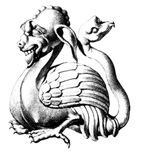
Is Beauty Just Decoration In an Otherwise Grim World?
AESTHETICS OF DEATH VS. AESTHETICS OF LIFE
“The world is charged with the grandeur of God.” — Hopkins
It was a fall morning, cool and still but bright, and the sun’s rays made my outdoor vigil comfortable. The downtown streets were quiet, traffic was sparse, and other than the occasional flutter of pigeon wings, the only sound was the clear, high whistle of a woman standing outside a beige brick building across the street from where I stood. I recognized the tune, Haydn’s trumpet concerto, a jaunty piece and well performed by the whistler. Leaning against the brass plaque on the building front, the whistler was dressed in a green vest over a light jacket, jeans, boots, and riding chaps. I supposed that after her morning’s work she was going to go riding. Her reasons for being out on this street were connected to mine. The brass letters against which she leaned spelled “Planned Parenthood.” I was there, the statutory distance from the doors, as a prolife sidewalk counselor, whereas this equestrian, this music lover, was there to escort women into the abortion clinic.
The mark of aesthetic appreciation I noticed that morning was, I thought, in stark contrast to the grisly business of abortion. The scene was yet another item for my mental catalogue, a catalogue of strange combinations of art and death. The catalogue contains samples big and small. Milwaukee’s east side, for instance, is there. It is the most culturally alert part of town: One can sip coffee in bohemian cafes, watch old foreign films, admire restored Victorian and Tudor homes, visit art museums with orange doors (on display, not in use), and shop at a multitude of “politically aware” boutiques. Yet there are signs of a frightening mentality: parodies of the Christian fish symbol with little feet and “Darwin” scrolled in the middle; bumper stickers that urge “Having Fun at the Expense of Others;” a hot pink Renault with the personalized plate, IM1RU. All the abortion clinic escorts I’ve met are east siders. They listen to jazz, dine at Middle Eastern restaurants, display their badges of social consciousness, and sing the canticle of “choice.”
My catalogue contains a number of bumper stickers. One bumper recently gave me three. On the left, “Practice Random Acts of Kindness and Senseless Acts of Beauty.” In the middle, “Celebrate Diversity.” On the right, “I’m Pro-Choice, and I Vote.” Abortion an act of kindness? Dilation and evacuation an act of beauty? Infanticide a celebration of diversity? This was a combination that made no sense to me: How can anyone with a sense of beauty simultaneously embrace a pro-death position? It’s the fault of my education, I suppose; I’ve been taught to associate death with evil, and evil with deformation. Dante showed me slashed and broken creatures, souls turning into serpents, and spilled guts in hell, while in heaven the blessed dwell in unspeakable beauty, in perfect, living, geometric formations. More recent authors, however, should have prepared me for the marriage of death and beauty. Oscar Wilde’s Dorian Gray preserves his physical beauty at the cost of his moral demise. The Picture of Dorian Gray fleshes out Wilde’s aesthetic theories, specifically the idea that “life imitates art.” Wilde shows the pursuit of fine, aesthetic moments leading to a splendid corruption.
You May Also Enjoy
The Lewis industry aims to explain a man who has already explained himself quite well and explored his own thought with remarkable thoroughness.
God knows me as one to whom He continually gives being, and whom He holds and guides in His loving Providence.
Christian orthodoxy became a "minority persuasion, easily dismissed as sectarian by the press and the wider public alike."

